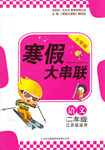题目内容
In this age of Internet chat, videogames and reality television, there is no shortage of mindless activities to keep a child occupied. Yet, despite the competition, my 8-year-old daughter Rebecca wants to spend her leisure time writing short stories. She wants to enter one of her stories into a writing contest, a competition she won last year.
As a writer I know about winning contests, and about losing them. I know what it is like to work hard on a story only to receive a rejection slip from the publisher. I also know the pressures of trying to live up to a reputation created by previous victories. What if she doesn’t win the contest again? That’s the strange thing about being a parent. So many of our own past scars and dashed hopes can surface.
A revelation (启示) came last week when I asked her, “Don’t you want to win again?” “No,” she replied, “I just want to tell the story of an angel going to first grade.”
I had just spent weeks correcting her stories as she spontaneously (自发地) told them. Telling myself that I was merely an experienced writer guiding the young writer across the hall, I offered suggestions for characters, conflicts and endings for her tales. The story about a fearful angel starting first grade was quickly “guided” by me into the tale of a little girl with a wild imagination taking her first music lesson. I had turned her contest into my contest without even realizing it.
Staying back and giving kids space to grow is not as easy as it looks. Because I know very little about farm animals who use tools or angels who go to first grade, I had to accept the fact that I was co-opting (借用) my daughter’s experience.
While stepping back was difficult for me, it was certainly a good first step that I will quickly follow with more steps, putting myself far enough away to give her room but close enough to help if asked. All the while I will be reminding myself that children need room to experiment, grow and find their own voices.
1.What did the author say about her own writing experience?
A.She was constantly under pressure of writing more.
B.Most of her stories had been rejected by publishers.
C.Her way to success was full of pains and frustrations.
D.She did not quite live up to her reputation as a writer.
2. Why did Rebecca want to enter this year’s writing contest?
A.She wanted to share her stories with readers.
B.She had won a prize in the previous contest.
C.She was sure of winning with her mother’s help.
D.She believed she possessed real talent for writing.
3. The author took great pains to refine her daughter’s stories because ________.
A.she wanted to help Rebecca realize her dream of becoming a writer
B.she believed she had the knowledge and experience to offer guidance
C.she did not want to disappoint Rebecca who needed her help so much
D.she was afraid Rebecca’s imagination might run wild while writing
4. What’s the author’s advice for parents?
A.Children should be given every chance to voice their opinions.
B.Children should be allowed freedom to grow through experience.
C.Parents should keep an eye on the activities their kids engage in.
D.A writing career, though attractive, is not for every child to pursue.
1.C
2.A
3.B
4.B
【解析】
试题分析:这篇文章讲述了一个作家母亲指导女儿写作的故事,通过作者的亲身经历向人们揭示出当今社会的子女教育问题。告诉我们要给孩子自由发展的空间,不要把自己的思想强加于孩子们。
1.细节判断题。根据文章的第二段前半部分I know about winning contests – and about losing them. I know what it is like to work hard on a story only to receive a rejection letter from the publisher. I also know the pressure of trying to live up to a reputation created by previous victories.意思是:“作为一个作家,我享受过夺得竞赛优胜的喜悦,也品尝过失败的滋味。我知道辛辛苦苦写出来一个故事、结果却得到一张出版商的退稿信时的感受。我同样知道夺得优胜后再想保住这份荣誉的压力。”可知C是正确的。
2. 细节理解题。根据she replied, “I just want to tell the story of an angel going to first grade.”意思是她想告诉人们一个上小学一年级的天使的故事,也即想与人们(至少是读到它的人)分享这个故事,这与A的说法是一致的。
3.细节理解题。文根据文章是在第四段, I had just spent weeks correcting her stories as she spontaneously (自发地) told them. Telling myself that I was merely an experienced writer guiding the young writer across the hall, I offered suggestions for characters, conflicts and endings for her tales.可知我相信自己有知识有经验来提供指导。故答案为B。
4.推断题。根据第四段:这段的大意是:第一步,我不再干扰孩子,而后,给她空间的同时又能在需要时随时提供帮助。作者随时提醒自己,孩子需要尝试、成长以及表达自我的空间。故答案为B。
考点:考查教育类短文
点评:文章的主旨大意即是文章的中心思想。做阅读理解题首先要明确文章的中心意思,只有明确了中心意思,那么做阅读理解的试题才能做到游刃有余。阅读理解的主旨大意题其实主要考查考生把握全文内容或理解文章中心思想的能力以及分析归纳文章段落大意、重要情节、人物特征和写作特点等方面的能力。文章的主旨大意明确了,若还具备分析长难句的能力,难的试题也会迎刃而解。

 寒假大串联黄山书社系列答案
寒假大串联黄山书社系列答案